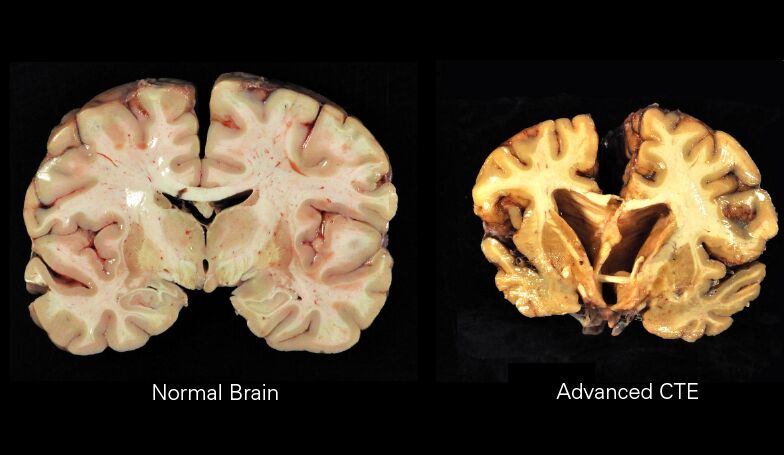A common insidious condition has ruined National Football League (NFL) players for as long as we can remember. That condition is called Chronic Traumatic Encephalopathy, commonly known as CTE.
CTE is a mysterious brain disorder caused by repeated blows to the head. Athletes who play physical contact sports such as boxing, ice hockey, and soccer are known to be at risk of the disorder. However, those who play football suffer from it the most.
We often wonder why NFL players such as Arron Hermandez, Jovan Belcher, Philip Adams, Junior Seau; and Dave Duerson have thrown their lives away to criminal activities, aggressive behavior, or even suicide. The answer to that question is CTE. According to studies, 99% of NFL players would develop CTE, but by college, 91% of players would already have developed CTE. Now, the next question is, what is CTE?
Well, it has only been studied for 15 years now. It’s a relatively new discovery categorized as a progressive degenerative brain disease. The early signs are minor mood swings, struggle to concentrate, and even memory loss, but when more developed, it spirals to little to no impulse control and extreme aggression. The older someone gets while having CTE, the more prevalent the symptoms.
The worst part of CTE is there is no cure. The only known process of developing CTE is repeated hits to the head. As a result, this causes a buildup of a protein called Tau around the blood vessels of the brain. According to doctors, the more Tau builds up, the worse impulse control and aggression become.
Another unfortunate fact about CTE is that it’s only diagnosable after death, leaving its victims helpless to the symptoms. Arron Hermandez is one of the perfect examples of a CTE victim. He was a football tight end for the New England Patrons. Hernandez went from being an NFL star to a murder suspect in a matter of years. He was found guilty of one murder before being acquitted of the others. He committed suicide while incarcerated, and stage 4 of CTE was determined after his death.
Another example is Joven Belcher. Belcher was a linebacker for the Kansas City Chiefs. His professional football career was short-lived before he died in 2012. Belcher had everything going for himself until the fatal night of November 30th, 2012.
He argued with his girlfriend and mother to his 3-year-old daughter, 22-year-old Kasandra Perkins. During the argument, Belcher drew a handgun and fatally shot Perkins in front of his mother, Cheryl Shepherd. Perkins was shot in the neck, chest, abandonment, hip, back, leg, and hand for a total of nine times.
The next morning, on December 1st, Belcher drove five miles to the parking lot of the Chiefs practice facility. He stepped out of the car with a gun pointed to his head and pulled the trigger. Belcher had CTE at the time of his death, according to medical reports.
Most of the symptoms of CTE can vary depending on how badly it affects a human being. It does not directly cause death but changes personality and behavior instead. CTE also makes a person not feel like themselves anymore. Players with CTE can become isolated from their friends and family.
Sometimes, they become unable to tell a story, maintain a conversation, or recognize their loved ones. A former player who has CTE described having headaches that felt like ice picks hitting his brain. Some former players with CTE suffer from memory loss and depression. Some players and those around them have a hard time with their violent mood swings, rage, and
Paranoia.
More parents, who have children involved in sports decide not to let their children play football. Today, it remains to be seen whether football will eventually face a significant decline in popularity, like boxing or hockey.Boxing and hockey are both sports that fell from prominence as the brain damage suffered by ex-boxers drew more public attention.
Football is currently the most-watched sport in the U.S. by a high margin, while basketball is the most-played sport. Most families that have athletes with CTE follow the two steps to make their loved ones feel comfortable.
The most important step is having a support system. Reaching out to people you trust can help get you through moments of stress. Friends, family, and colleagues can help one to feel wanted while dealing with CTE. A crisis hotline like the National Suicide Prevention Lifeline can also serve as a source of support. Also, you can make a safety plan to guide you through those especially difficult moments.
Categories:
CTE Awareness
October 10, 2023
0
More to Discover

















